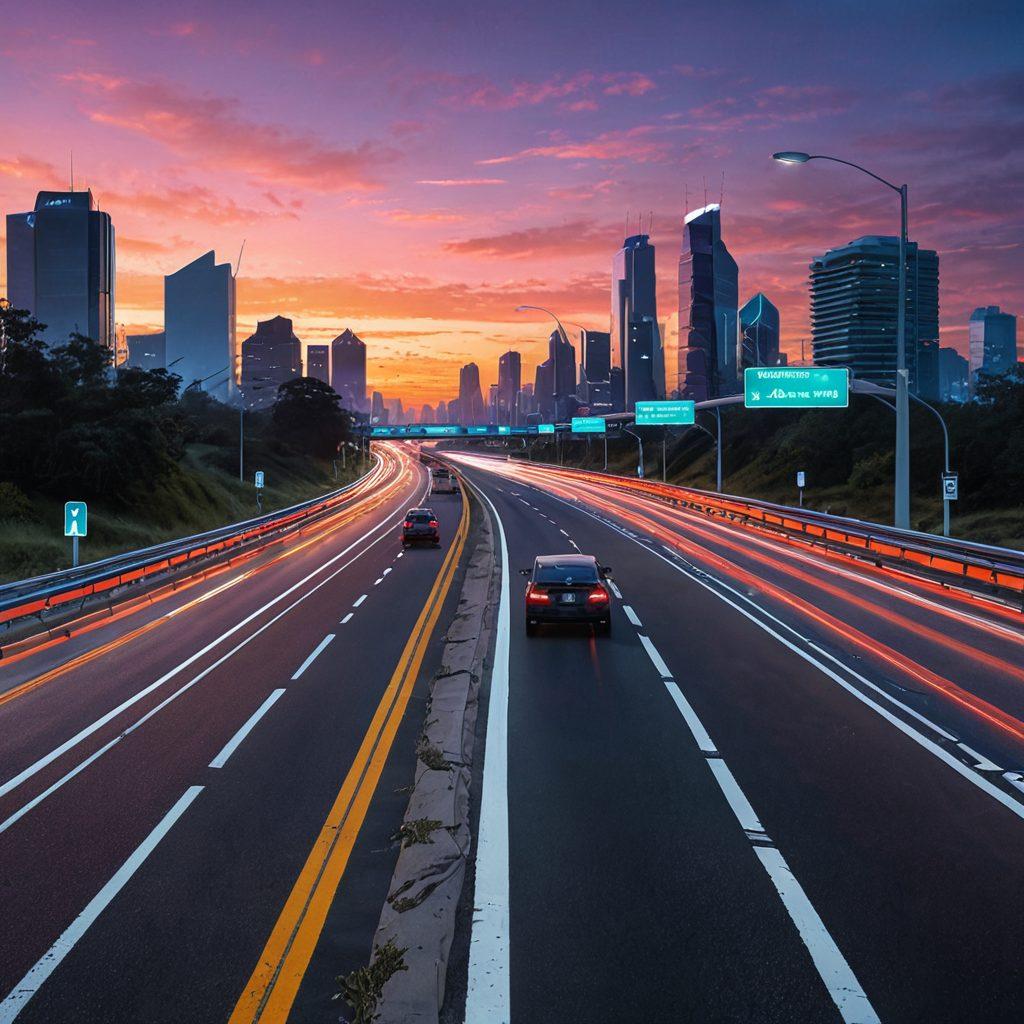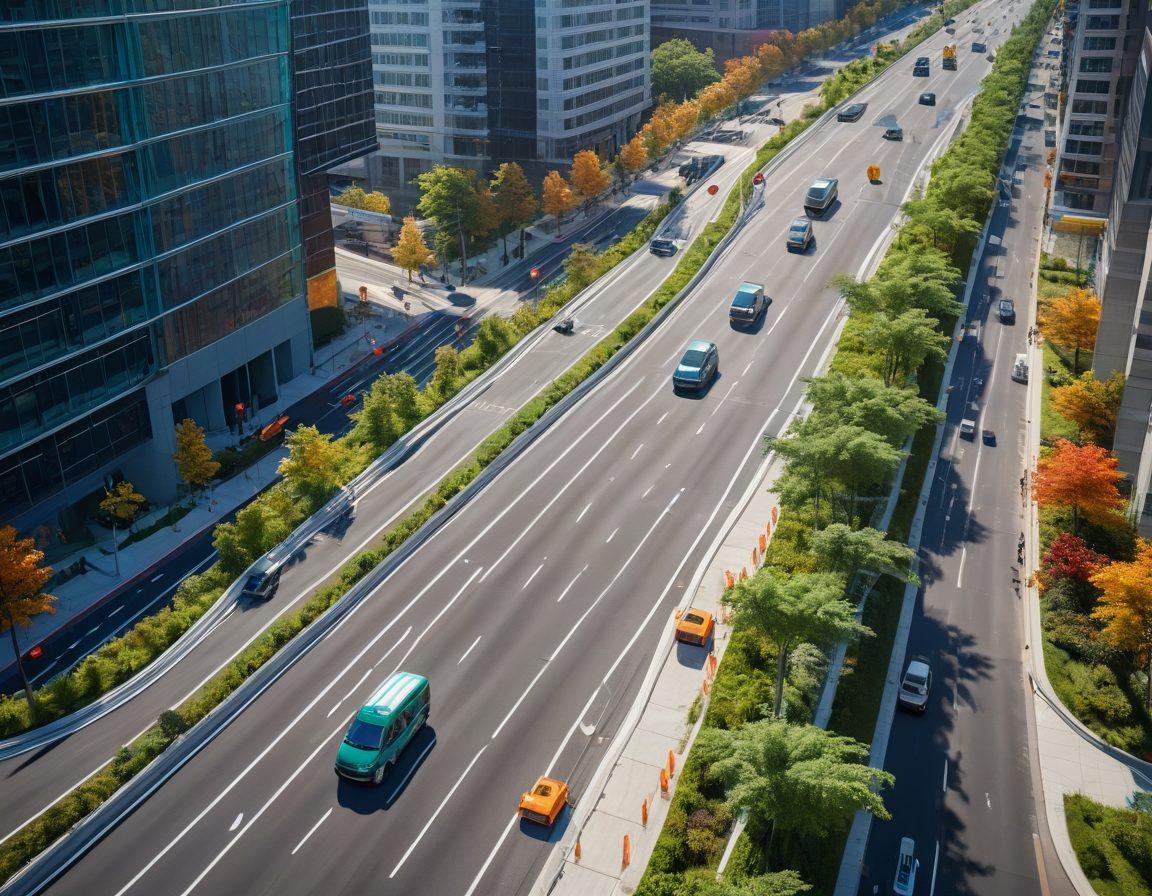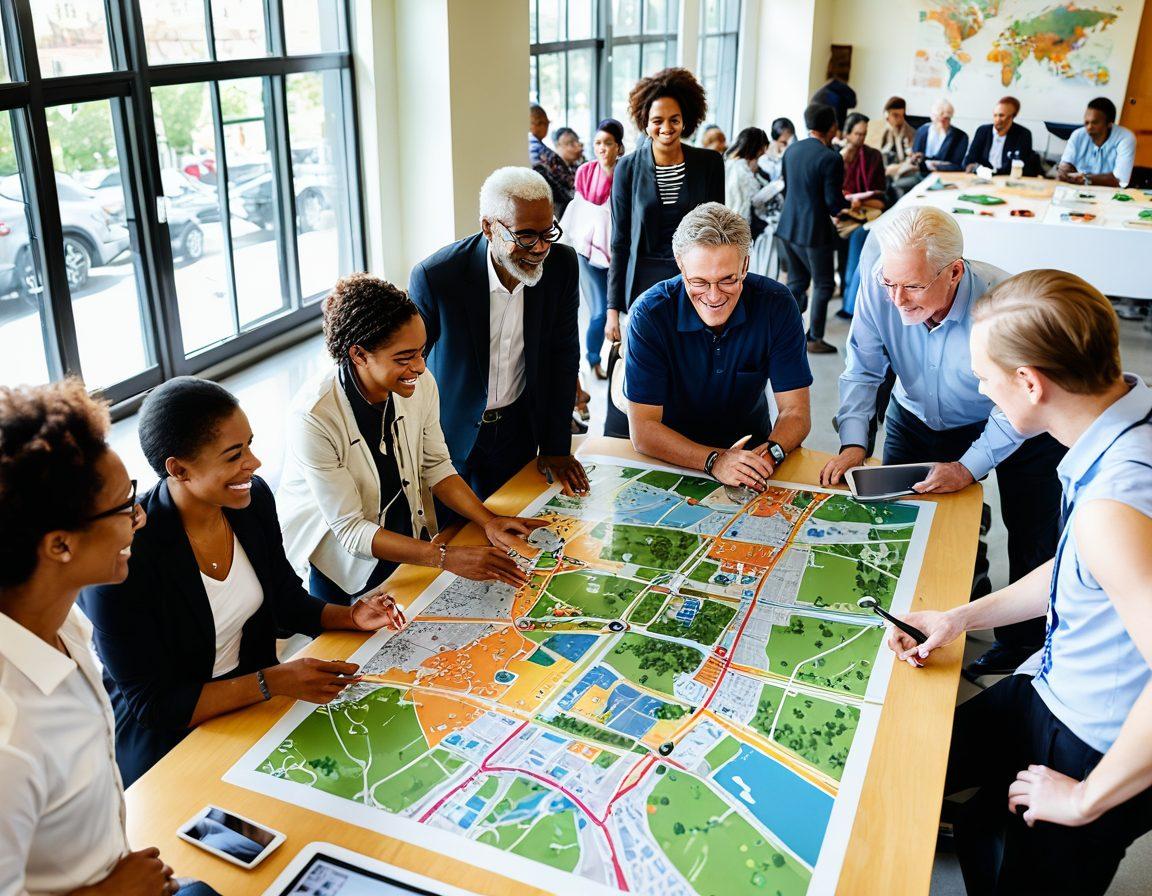Navigating Sadness: Enhancing Road Safety and Traffic Management for a Brighter Tomorrow
Imagine a world where every street feels safe, where every pedestrian strolls with confidence, and vehicular flow is nothing short of seamless. This is not just a dream; it is a potential reality shaped by innovative approaches to traffic management. With roads being the veins of our cities, the need for effective road safety initiatives has never been more crucial. Enter the world of transportation planning, where the right strategies can drastically improve the roadways we rely on daily. Let's explore how these innovative measures can redesign our commuting experiences for the better, ensuring safety while enhancing the overall mobility solutions available to us.
As we delve into the concept of shaping safer streets, we come across the term 'traffic regulations'—a fundamental element of public infrastructure that often goes overlooked. According to the Nevada Department of Transportation (ndot), well-enforced traffic regulations can lead to significant reductions in road accidents. But how can such regulations translate into real-world improvements? By integrating advanced technology and civil engineering practices, cities are adopting smart traffic signals and real-time traffic analysis tools, creating a dynamic and responsive traffic management system. Just imagine traffic lights that change based on the volume of vehicles or pedestrian counts—how much safer would our streets be?
Moreover, it’s essential to think about the quality of our pavements in conjunction with innovative road maintenance strategies. High-quality pavement not only contributes to a smoother ride but also plays a critical role in accident prevention. A deep dive into the world of infrastructure development reveals the staggering impact that well-maintained roadways have on reducing traffic congestion and enhancing safety measures. It’s a million-dollar question: how do we as citizens advocate for better upkeep and innovative designs in our transport networks? Perhaps meaningful conversations with local government officials or participating in urban planning discussions are steps in the right direction.
To further solidify this vision of improved road safety, we must highlight the significance of sustainable transport practices. The future of transportation lies in our ability to embrace eco-friendly options like public transport and shared mobility solutions. Not only do these options reduce the number of vehicles on the road, which enhances traffic flow, but they also lead to decreased emissions—a win-win scenario for both urban environments and public health. How many commuters might reconsider their transport choices if they recognized the profound environmental impact of their daily drives?
Finally, the conversation about shaping safer streets would not be complete without addressing the logistical components of traffic management. An intricate web of supply chains relies on efficient transport networks and traffic solutions to function correctly. When we prioritize accident prevention and implement effective transportation safety measures, we create a ripple effect that benefits not just personal commuters, but also businesses and services that depend on the reliable movement of goods. The next time you embark on a journey, reflect on how every aspect of transportation from infrastructure development to roadway maintenance plays a crucial role in ensuring that we can arrive at our destinations safely. What if we could all unite in advocating for smarter, safer streets? The road to change begins with a single step—and that step starts with us.
Building Resilience: Infrastructure Development for Enhanced Roadway Safety
In a world where transportation systems are the veins of our societies, building resilient infrastructure is not just an option; it’s a necessity. Picture this: every day, millions of commuters navigate busy roads, relying on the safety of highways and streets to get them home. Yet, with so many vehicles on the move, accidents can be inevitable if we don’t prioritize roadway safety. As the NDOT emphasizes the importance of infrastructure development, it's clear that enhancing road safety isn't merely a technical challenge—it's a moral imperative for every urban planner and civil engineer to tackle swiftly.
Imagine a bustling city where the sound of honking horns and rushing wheels blurs into a cacophony of chaos. Now envision that this very scene transforms into a symphony of order, where every vehicle flows smoothly, and traffic management techniques come alive to promote safety. It's no secret that we need better traffic flow and effective safety measures, especially in urban areas where transportation planning becomes crucial to accommodate an ever-growing population. Wouldn’t you want to be part of a movement that ensures every commute is as safe as it can possibly be?
The quest for improved roadway safety goes beyond just building more roads. It encompasses the entire spectrum of public infrastructure and the meticulous logistics of how that infrastructure is maintained. For instance, think about the critical role pavement quality plays in accident prevention. A well-maintained road isn’t just a visual treat; it directly affects the safety of countless drivers and pedestrians. By investing in sustainable transport solutions, we can build pathways that not only minimize hazards but also enrich our communities.
Public transport is another pillar of effective transportation systems. When cities focus on integrating public transit into their transport networks, they significantly reduce traffic congestion and enhance safety for all users. In fact, studies indicate that areas with robust public transport options see a marked decrease in road accidents. This highlights an important question: are we doing enough to promote these alternatives?
As we look toward the future of our transportation systems, it’s essential to keep the conversation alive about road maintenance, traffic regulations, and accident prevention strategies. Infrastructure development must adapt and evolve, responding to the needs of those who utilize it every single day. Are we ready to embrace innovative mobility solutions that enhance the quality of our roadways and the safety of our communities? The answers lie in our collective efforts as citizens, planners, and engineers committed to shaping a brighter tomorrow through deliberate, thoughtful actions in traffic analysis and urban planning.
From Sadness to Solutions: Fostering Community Well-Being through Smart Transportation Planning
In today's fast-paced world, the concept of sadness may often feel synonymous with the struggles we face daily, particularly on our roadways. Every day, countless individuals experience the frustration that arises from traffic congestion, accidents, and poorly maintained roads. But what if we could transform that sadness into solutions? By focusing on smart transportation planning and fostering community well-being, we can create a brighter tomorrow—one where road safety and traffic management work in harmony to improve our lives. It’s time to consider how we can build a future that not only enhances mobility but also nurtures the emotional health of our communities.
Imagine a world where commuting is not a source of stress, but a seamless journey filled with opportunities for connection and exploration. It starts with effective transportation planning, driven by data from organizations like the NDOT (Nevada Department of Transportation) and other civil engineering initiatives. By implementing traffic analysis and traffic management strategies, we can identify patterns that impede traffic flow and address the root causes of sadness on our roads. ‘Transportation isn’t just about getting from point A to point B; it’s about the quality of life along the way,’ a wise voice in urban planning once mused. So how can we turn theory into practice?
Safety measures play a critical role in improving roadway conditions and enhancing highway safety. Investments in public infrastructure are essential for preventing accidents and maintaining pavement quality, which can significantly reduce the stress of commuting. Let's not forget about the importance of logistics in our transport networks—the smoother people can navigate through urban areas, the happier and healthier they are. The correlation between effective road maintenance and reduced feelings of frustration is clear, and as we explore transportation safety, it becomes evident that our communities deserve better than what they currently experience.
Furthermore, fostering a culture of sustainable transport means prioritizing public transport and encouraging pathway improvements that promote walking and cycling. Can you remember the last time you felt joy while riding your bike down a well-maintained path? Those moments are not just blissful; they are essential to our emotional well-being. Advocating for bike lanes, pedestrian crossings, and enhanced public transport options can lead to better traffic flow, reducing the number of vehicles on the road while also providing healthier commuting alternatives. ‘The journey is just as important as the destination,’ isn't that the truth? We need to ensure that everyone is part of this journey.
Ultimately, as we move towards a future with more effective transportation planning, it is essential to engage communities in these discussions. Public transport improvements, road safety regulations, and community awareness campaigns can all foster an environment where individuals feel safe and supported when traveling. Asking ourselves critical questions such as, 'How can we make our roads safer for everyone?' or 'What measures do we need to take to prevent accidents effectively?' will shape our roadways for generations to come. While sadness may always linger as long as we travel, it’s our responsibility to transform these feelings into actions that spark hope and positive change in our transportation systems.


